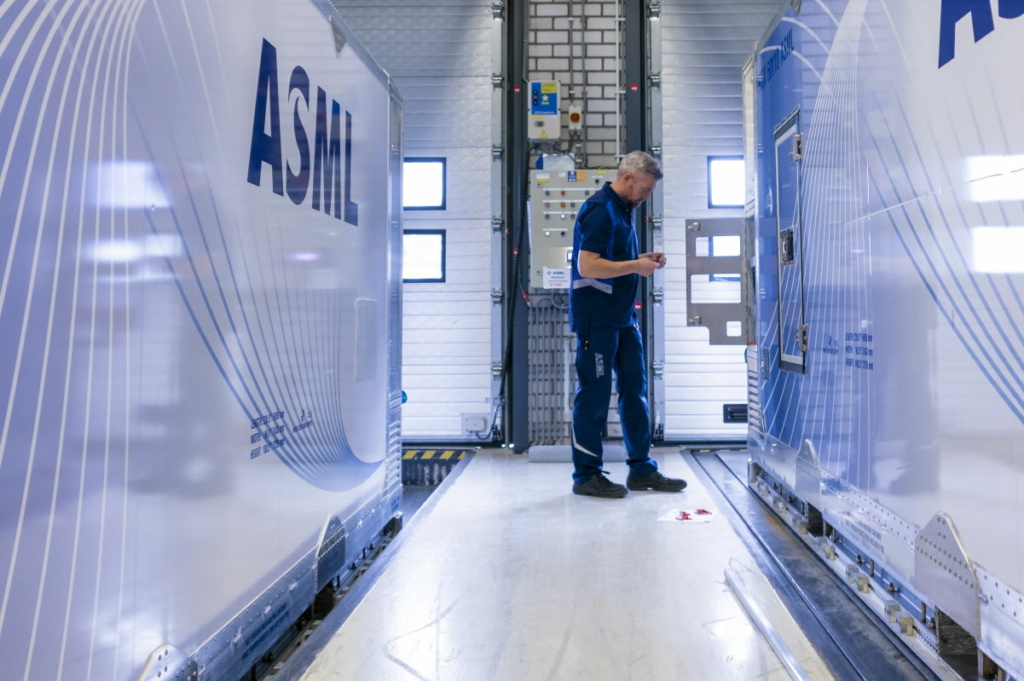
ASML operation to build controlled overcapacity in full swing
Fears of a recession as a result of high inflation, weak semiconductor demand in the consumer space, export restrictions, chip inventories on the rise and chip manufacturers dialing down production. Normally, these are bad omens for ASML. But not this year. Despite the turbulence, ASML predicts revenue growth of 25 percent in 2023.
Since customers expect a recovery in the second half of the year already, significant capex reductions, let alone cancelations, aren’t on customers’ minds, ASML CEO Peter Wennink explained at a press conference at the headquarters in Veldhoven, discussing Q4 and full-year financial results. “The duration of a potential recession in the minds of our customers is much shorter than the average lead time of our machines. They want to prepare for an upturn,” Wennink said in a video interview published by ASML.
ASML’s Q4 bookings of 6.3 billion euros were down compared to the 8+ billion reported in recent quarters, but offset against a Q4 revenue of 6.4 billion euros, the backlog is still barely shrinking – it now stands at over 40 billion euros. In 2022, despite its best efforts, ASML shipped only 55 percent of what customers would have liked. It’ll take a couple of years to catch up.
Immune
And so ASML keeps frantically expanding, striving toward a manufacturing capacity of 600 DUV and 90 EUV systems by 2025-2026, while ramping high-NA EUV tools to 20 systems in 2027-2028. As an example, 10,000 new employees boarded the ASML ship last year, taking the total to 39,000. Roughly 290,000 people more wanted to: the company received 300,000 resumes from around the world.
“ASML is moving from a just-in-time toward a just-in-case model,” CFO Roger Dassen said in an interview. “It’s frustrating to disappoint customers, which is why we’re expanding capacity.” There will probably be instances in the future that the target capacity will be too much, he admits. “There will be fluctuations in utilization.”
Dassen isn’t overly worried that these swings will become too much to handle, despite semiconductor manufacturers drastically increasing capacity. Currently, 326 billion dollars in new fab projects have been announced. Industry watchers fear these expansions don’t reflect true market demand, with governments around the world offering incentives to build fabs. “The number of semiconductor-consuming end markets has increased dramatically over the years. Much more so than 10-20 years ago, we see one or more segments going through a rough patch, but others doing well.”
For example, the PC and smartphone markets are down after two years of pandemic-fueled sales hikes. Meanwhile, automotive is still going strong, driven mostly by the increased semiconductor content of cars. “We’re more resilient these days. But, of course, that doesn’t mean that ASML is immune to a sustained global recession.”
Forward
Being a successful, fast-growing company isn’t without risks. If money isn’t much of an issue, managers may be tempted to overhire or start pet projects, thus creating overcapacity within the organization. Managing growth can also take a wrong turn, introducing too much bureaucracy. Not so at ASML, Dassen assures. “Being nimble is in our genes. We stay focused on what we need to achieve, and those things are defined by what customers want from us. There’s always a reason to be vigilant about introducing unnecessary layers or procedures in an organization, but in our culture, there’s always someone asking the hard questions.”
The most challenging aspect of the scale-up operation, Dassen says, has been – and still is – the supply chain. “Over the past 10-15 years, the number of tools ASML ships every year hasn’t grown much. Now, we want it to rise strongly and that’s putting a lot of pressure on our suppliers. We help them out with whatever they need, financially or otherwise. Finding qualified staff has proven the main bottleneck, we provide a support team for that.”
Isn’t ASML itself part of the problem, pulling in all the talent in the Brainport Eindhoven region? Dassen doesn’t think so. “That would be the case if we would only recruit locally. In fact, I think that companies like ASML act like a magnet. They attract talent from around the globe. I’m well aware that ASML has an effect on its surroundings, but others benefit from our presence as well.”
Perhaps it’s a good idea to forward a couple of those 290,000 CVs to suppliers.
Main picture credit: ASML





